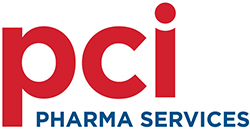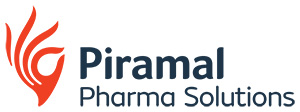2012 saw plenty of M&A activity, expansion into emerging markets but also job cuts as companies streamline their operations and cut costs. There was also investment in new plants to meet growth in demand. Jane Ellis reports
There were several significant deals during 2012, none bigger than Watson Pharmaceutical’s purchase of the Actavis Group for US$5.4bn, which created the world’s third-largest generics company, with combined sales expected to be in excess of $8bn. The new company will be called Actavis from the beginning of next year and will employ 17,000 people. Headquartered in New Jersey, US, Watson is also to start a multi-year rebranding campaign for its facilities, operations and commercial presence in 2013.
GlaxoSmithKline (GSK) said it would acquire Human Genome Sciences (HGS) for $3bn, bringing to an end a three-month battle for control of the US biotechnology firm. GSK raised its offer from $13 a share to $14.25 to gain control of Benlysta (belimumab), a treatment for autoimmune disease lupus, which was jointly developed with HGS under an agreement signed in 2006 and approved by the US FDA in March last year. In addition, GSK gained experimental medicines albiglutide for Type 2 diabetes and heart disease treatment darapladib.
AstraZeneca agreed to buy Ardea Biosciences, a biotechnology company based in San Diego focused on the development of small-molecule therapeutics for around $1.26bn. Ardea’s clinically most advanced product candidate, lesinurad (formerly known as RDEA594), is currently in Phase III development as a potential treatment for gout.
Other deals breaking the $1bn barrier included Novartis, which paid $1.5bn to snap up US dermatology generics specialist Fougera Pharmaceuticals, making Sandoz, its generics division, the leading generic dermatology medicines company globally, with estimated annual global sales of nearly $620m.
Amgen bought Micromet for $1.2bn in a deal that gave it access to a novel cancer treatment, blinatumomab, a Bispecific T cell Engager antibody in Phase II clinical development for acute lymphoblastic leukemia and for the treatment of non-Hodgkin’s lymphoma.
Takeda had an active year on the mergers and acquisitions front and bought three companies
Japanese pharmaceutical firm Takeda, which had an active year on the mergers and acquisitions front, purchased URL Pharma, a privately held pharmaceutical company headquartered in Philadelphia, PA, for $800m, and LigoCyte Pharmaceuticals for $60m, expanding its newly formed vaccines division. LigoCyte’s lead product is a vaccine to prevent norovirus gastroenteritis, which is in Phase I/II of clinical development.
Towards the end of the year, the firm also bought Envoy Therapeutics, a privately held drug discovery company based in Florida, for $140m. Takeda already had a 12.5% stake in Envoy following series A financing in October 2009, and two years ago the firms entered into a project focused on schizophrenia research.
Envoy’s proprietary bacTRAP technology combines innovative genetic engineering with molecular biology techniques for labelling and extracting the protein-making components of specific types of cells.
Other noteworthy transactions during the year included Pfizer’s purchase of NextWave Pharmaceuticals a US-based company focused on treatments for attention deficit/hyperactivity disorder (ADHD) and related central nervous system ailments, for $700m. NextWave’s Quillivant XR (methylphenidate hydrochloride) for extended-release oral suspension is the first once-daily liquid medication approved in the US for the treatment of ADHD. NextWave holds the exclusive North American marketing rights to the drug, which was developed with technology and manufacturing partner Tris Pharma.
On the equipment supply side, Bosch Packaging Technology of Germany acquired the machinery business of Eisai, a Japanese pharmaceutical company based in Tokyo, to broaden its inspection technology equipment portfolio. No financial information was revealed, but the Eisai machinery business specialises in inspection machinery for the pharmaceutical industry and in 2010 generated sales of around €76m with 120 associates worldwide.
One of the year’s more unusual deals was Piramal Healthcare’s decision to purchase Decision Resources Group (DRG), a US healthcare research provider, for $635m. DRG provides web-enabled research, predictive analytics via proprietary databases and consulting services to the healthcare industry.
US life science and technology company, Sigma-Aldrich agreed to buy BioReliance from private equity firm Avista Capital Partners for $350m in cash, extending its reach into biopharmaceutical testing and services.
Patheon acquired Banner Pharmacaps, a specialist manufacturer of gelatin-based dosage forms, for $255m, expanding its oral dosage development and manufacturing services.
Indian pharmaceuticals manufacturer Dr Reddy’s Laboratories said it would buy Netherlands-based drug delivery technology company OctoPlus for about $35m (€27.4m) in cash in its aim to globalise its R&D. And Aenova agreed to buy the Temmler Group, a contract pharmaceutical manufacturer based in Marburg, Germany, for an undisclosed sum.
emerging markets
Much of the year’s business expansion took place in emerging markets. Sanofi, for example, acquired Genfar, a manufacturer of generics, over-the-counter and prescription drugs headquartered in Bogota, Colombia, for an undisclosed sum. The French drugmaker said the transaction made it a market leader in Colombia and expanded its portfolio of ‘affordable pharmaceuticals’ in Latin America.
Meanwhile, Merck & Co set up a joint venture with Brazilian pharmaceutical company Supera Farma Laboratorios to sell pharmaceutical and branded generic products in the country. Takeda also expanded into Brazil with the purchase of Multilab for $266m in cash.
In Europe, Takeda completed its €75m pharmaceutical manufacturing facility in Russia. The firm plans to boost sales of its products in Russia by 15% a year over the coming four years. The 24,000m2 production plant, which is around 280km from Moscow, will employ 200 people and start by producing three Nycomed generic drugs, Cardiomagnyl, Actovegin and Calcium tablets for sale in Russia. Takeda purchased Nycomed for US$13.7bn in 2011. The plant will initially produce 90 million sterile ampoules and more than 2 billion tablets a year. It is expected to be fully operational by 2014.
There was also plenty of activity in both India and China
There was also plenty of activity in both India and China. Aptar Pharma, for example, opened a nasal and pulmonary drug delivery devices manufacturing plant near Mumbai, India. The site includes an ISO Class 7 cleanroom where production will focus on the DF30 metering valve for pMDIs and on spray pump assembly.
Bosch inaugurated a new manufacturing facility at Verna in Goa, investing b5m to build the new plant on a plot of 33,000m2 to expand capacity and meet the increasing demands of India’s fast-growing packaging market as well as international markets. Bosch aims to double its production capacity in India from 200 to 400 machines over the next three years.
Another German firm, plastic and glass packaging manufacturer Gerresheimer, took a 70% shareholding in Mumbai company Neutral Glass & Allied Industries, acquiring a pharmaceutical glass production facility in Kosamba in the process.
Hospira, a US manufacturer of injectable drugs, bought a factory and a research and development centre from Indian pharmaceuticals firm Orchid Chemicals & Pharmaceuticals for $200m. The factory, located in Aurangabad, manufactures active pharmaceutical ingredients. It was built in 2000 and employs around 640 people. The R&D facility in Chennai has some 160 scientific personnel.
Novasep built a new 2,000m2 facility in the Shanghai Pudong district in China. The plant, which includes 800m2 dedicated to new laboratory, piloting and FAT testing areas, will boost the company’s process development and engineering capabilities to cater for increasing demand in China and East Asia.
Sigma-Aldrich's plant in Wuxi, China, will provide localised packaging, analytical services and quality control for high-quality products
Sigma-Aldrich opened a plant in Wuxi, China that will provide localised packaging, analytical services and quality control for high-quality products. The firm also completed an expansion of its Bangalore, India operation with a larger distribution centre and a new packaging facility.
Also in Asia, SAFC signed an agreement with Seoul, South Korea-based CrystalGenomics, its first pre-formulation services contract in the country, to support the development of active pharmaceutical ingredients for non-steroidal anti-inflammatory drugs (NSAID).
Quintiles, a fully integrated biopharmaceutical services company headquartered in Durham, NC, US, invested $14m to establish a 4,000m2 regional headquarters for China in Shanghai. The firm also significantly expanded its laboratory testing capabilities in the country under a joint agreement with the Shanghai Clinical Research Centre (SCRC).
job losses
There were some less positive aspects to 2012 as Big Pharma continued to face generic competition and other challenges. Many companies had to restructure to make financial savings, which usually led to job cuts.
AstraZeneca, for example, said it would axe 7,300 jobs over the next two years as part of a restructuring initiative to save $1.6bn a year. The Anglo-Swedish giant said the cuts should be seen in the context of the firm taking ‘decisive steps to improve returns on investment’.
AstraZeneca's job cuts should be seen in the context of taking decisive steps to improve returns on investment
The firm is also creating a new ‘virtual’ neuroscience Innovative Medicines unit (iMed) made up of a small team of around 40–50 scientists. The team will be based in major neuroscience hubs – Boston (US) and Cambridge (UK) – and will work closely with innovative partners such as the Karolinska Institute in Stockholm (Sweden).
The implementation of this new model will lead to the loss of 2,200 jobs globally and the end of R&D activity at two sites focused on neuroscience: Södertälje in Sweden and Montreal in Canada. AstraZeneca said that Södertälje would remain an important part of its network but the Montreal facility will close.
As the company makes further efficiencies in the supply chain, 1,350 jobs will go in support functions in Operations.
Takeda said it would trim its workforce by 2,800 over the next four years following its acquisition of Nycomed in 2011. In Europe, 2,100 jobs will go, as well as 700 in the US as the firm combines r&d sites or eliminates some subsidiaries, mostly in Europe, by the end of 2015.
The US pharmaceutical industry was further hit when Novartis said it would cut nearly 2,000 jobs as it faced the patent loss of hypertension treatment Diovan (valsartin). Around 1,630 executives are to go from the US sales force and approximately 330 positions as a result of the reorganisation of the firm’s US general medicines business.
Sanofi said it would close its Fawdon Manufacturing Centre in Newcastle-upon-Tyne, UK, with the loss of 450 jobs. The plant, which makes solid dose oral medications mainly for UK and European markets, will close by mid-2015 as the result of ‘an adverse economic climate and the challenging pharmaceutical market in Europe’.
Sanofi aims to achieve a reduction of around 900 jobs through early retirements, voluntary redundancies and redeployment of staff
The firm also plans to cut around 900 jobs over the next three years as it reorganises its r&d activities in France. It aims to achieve the reduction through early retirements, voluntary redundancies and redeployment of staff.
Merck KGaA announced a restructuring of its Merck Serono division in Switzerland, which will include the closure of its Geneva and Coinsins sites.
The company will in future focus its r&d resources in three hubs: in Europe (Darmstadt), the US (Boston) and Asia (Beijing). Closure of the Geneva site is planned in mid-2013, and that of the Coinsins site in 2014.
Merck encouraged staff in Geneva to apply for support from a €30m Entrepreneur Partnership Programme, and as a result three spin-off companies have been launched so far: Prexton Therapeutics, Quartz Bio and Asceneuron.
Patheon instigated a ‘plan of termination’ and said it would cut 91 people from its global pharmaceutical development services and commercial operating segments as it implements a ‘corporate transformation strategy’ across these activities.
In addition, over the next 2–3 years the firm will change the ‘scale and scope’ of its business in Swindon, UK by winding down or transferring non-cephalosporin commercial production to other facilities and when ‘commercially appropriate’ directing some development projects to other plants.
challenging conditions
Lonza said it would axe 500 jobs over the next two years as it implements a series of ‘productivity improvements’.
The firm will cut 400 positions at its facility in Visp, Switzerland, which manufactures chemical intermediates and active pharmaceutical ingredients, as part of the VispChallenge programme announced in 2011, which aims to save $107m by 2015. On top of the cuts at Visp, another 100 jobs will go worldwide.
Lonza said Visp had been hit by the strength of the Swiss franc, competition, and higher oil prices and energy costs. In common with Sanofi, the majority of the job losses will come from internal transfers, early retirements, and a reduction in the number of temporary contracts.
But as some doors closed, others opened during the year as many companies invested in new plants and capacity.
GSK, for example, made one of its largest commitments to the UK life sciences sector in recent years by investing more than £500m across its manufacturing sites to increase production of active ingredients for its pharmaceuticals and vaccines. The investments could create up to 1,000 new jobs.
The firm will build a new £350m manufacturing plant in Ulverston, Cumbria, the first GSK plant to be built in the UK for almost 40 years. It will also invest £100m at its two manufacturing sites at Montrose and Irvine in Scotland.
The investment at Montrose will enable the plant to produce key materials for GSK’s respiratory medicines, and to produce aluminium adjuvants used in the manufacture of vaccines. At Irvine, GSK will increase production capacity for antibiotics to meet growth in emerging markets.
GSK is also expanding its manufacturing and new drug development activities in Victoria, Australia, creating 58 new jobs by 2017 in an investment of $64m. The Boronia site, east of Melbourne, manufactures medicines for migraine, herpes, epilepsy, smoking cessation, hypertension, asthma, pain relief and antivirals. The plant is also GSK’s largest globally for the production of sterile and non-sterile liquid products using blow-fill-seal (BFS) technology. The new investment will allow GSK potentially to double its current BFS capacity by installing new technology at the plant.
The money will also support the creation of a pilot scale facility for the development of new powder and sterile liquid pharmaceutical products, enabling GSK to continue its r&d collaboration with the Monash Institute of Pharmaceutical Sciences in Melbourne.
largest chromatography plant
Meanwhile, Novasep aims to build in Europe what will be the world’s largest chromatography plant for the production of large volume commercial APIs in a €30m investment. The plant will be built at Novasep’s existing Mourenx site in France and will be operational and validated within 18 months.
The investment follows two other significant global investments from Novasep in 2012: the opening of a new 2,000m2 facility in Shanghai, China; and a €3m investment to expand the company’s high potency manufacturing capabilities at Le Mans, France.
Gerresheimer completed a pharmaceutical packaging and assembly area at its facility in Pfreimd, Germany. The area comprises three Class D (ISO Class 8) cleanrooms ranging in size from 70–90m2. The modular production cells are separated from each other by pressure cascades and the rooms are equipped with assembly, filling, and test equipment.
Penn Pharma has invested £14.4m at its Tredegar facility in Wales. The move will enable the company to expand its specialist high containment facilities with a new 15,000ft2 development and commercial manufacturing unit for tablets and capsules. The building is on track to open in the first quarter of next year.
Sigma-Aldrich is adding a new powder manufacturing facility at its plant in Irvine, Scotland, its second at the site, to provide an internal back-up supplier for its customers. It will be used to service customers across Europe and will create 24 new jobs.

This picturesque facility on the Isle of Lewis, Scotland, was acquired by BASF Pharma as part of the purchase of Equateq, a manufacturer of omega-3 fatty acids
Also in Scotland, BASF Pharma plans to use a £2.95m grant from Scottish Enterprise to help increase manufacturing capacity at its facility on the Isle of Lewis, potentially creating 98 new jobs and safeguarding 25 existing positions in the process. The Lewis site was obtained by BASF following the acquisition of Equateq, a manufacturer of highly concentrated omega-3 fatty acids in May.
Redx Pharma, an early stage drug development company based at the University of Liverpool in the UK, was successful in its bid for £4.7m from the third round of the Government’s Regional Growth Fund (RGF).
The funding will support the launch of a new £10.8m research and development centre focused on antiviral and anti-infective drugs. It will enable the establishment of a new subsidiary, Redx Anti-Infectives, which will create 119 jobs in Liverpool. The posts will be within chemistry, biochemistry and analytical testing. A further 28 specialist jobs are expected to be created within the wider supply chain.
SCM Pharma, a UK-based contract development and manufacturing organisation (CDMO), was awarded more than £1m of funding as part of the RGF, which will support the firm’s £6m investment in a new commercial manufacturing facility.
On balance, 2012 was a positive year for the pharmaceutical industry. There might have been job cuts, but after restructuring many companies will be leaner, stronger and fitter, and have the resources to be able to invest in their future to meet any new commercial challenges.








